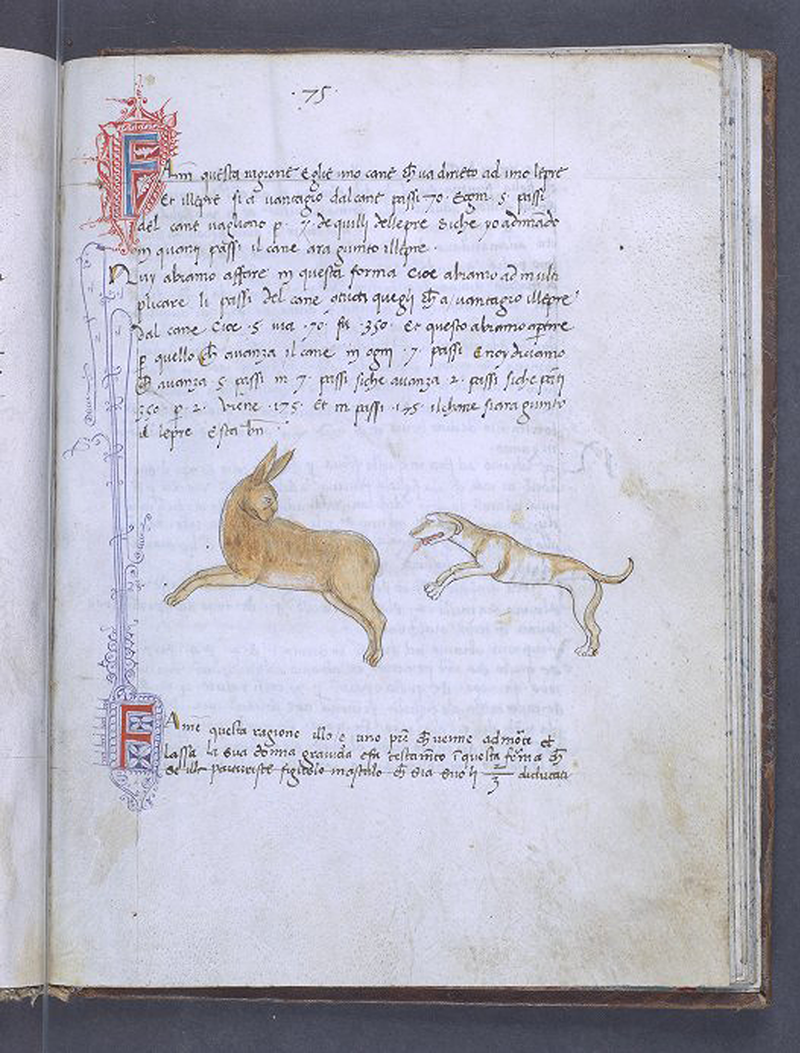- About MAA
- Membership
- MAA Publications
- Periodicals
- Blogs
- MAA Book Series
- MAA Press (an imprint of the AMS)
- MAA Notes
- MAA Reviews
- Mathematical Communication
- Information for Libraries
- Author Resources
- Advertise with MAA
- Meetings
- Competitions
- Programs
- Communities
- MAA Sections
- SIGMAA
- MAA Connect
- Students
- MAA Awards
- Awards Booklets
- Writing Awards
- Teaching Awards
- Service Awards
- Research Awards
- Lecture Awards
- Putnam Competition Individual and Team Winners
- D. E. Shaw Group AMC 8 Awards & Certificates
- Maryam Mirzakhani AMC 10 A Awards & Certificates
- Two Sigma AMC 10 B Awards & Certificates
- Jane Street AMC 12 A Awards & Certificates
- Akamai AMC 12 B Awards & Certificates
- High School Teachers
- News
You are here
Mathematical Treasure: 15th-century Algorismus from Southern Italy
In 1478, an elaborately illustrated algorismus was presented to a member of the prominent Albertini family in Nola, Southern Italy. Officially the book is an algorismus or algorism as it teaches arithmetic employing Indo-Arabic (Hindu-Arabic) numerals. However, it is unusual in that it does not supply basic instruction, but rather it presents and solves a wide variety of commercial problems. Perhaps it is best described as a “Pedagogical Handbook on Commercial and Practical Problem Solving.” Its author was a noted calligrapher, Pietro Paolo Muscarello.
The first seven folios comprise a detailed “Table of Contents,” after which a series of problems are stated and resolved. It is most likely that the Albertini family were merchants or were involved in the merchant trade.




The latter part of the text contains a large series of illustrated problem situations. Most of these problems were classics by this time and can be recognized through their illustrations:

Here, three youths are attempting to survey (measure) a town employing available mathematical instruments.

A cat seeks to catch a mouse that has run up a tower. The mouse, from its high position, seems to taunt the cat.

A comparative rate problem where a hound chases a hare.

Emptying a case of wine with three spouts of differing capacity.

A man wishes to determine the unknown height of a tower. Although he holds a measuring instrument, he remains perplexed as he desires a shadow for his measurement.

A tailor encounters a problem in dividing cloth for garments. Several problems concerning weaving and cloth manufacture are listed and reflect the commercial activities of Italy during this period, when the region was the wool-processing center of Europe.

The scene shown above is an illustration of a standard problem situation with a little humor (realism?) added to the scene. An old man lies dying while family look on. His estate is to be divided among the heirs; however, the youth at lower left cannot wait and attempts to break into the money chest.
The images above were obtained through the kind cooperation of the University of Pennsylvania Libraries, The Lawrence J. Schoenberg Collection of Late and Early Renaissance Manuscripts, Kislak Center for Special Collections, Rare Books and Manuscripts. Lawrence Schoenberg, a successful businessman and collector of early scientific manuscripts, donated his collection to the University. The item shown here is fully digitized and may be consulted and copied in its entirety with due credit provided, including its reference number, LJS 27.
Index to Mathematical Treasures
Frank J. Swetz (The Pennsylvania State University), "Mathematical Treasure: 15th-century Algorismus from Southern Italy," Convergence (February 2019)




